This discussion and review contains spoilers for Star Trek: Strange New Worlds season 2, episode 3, “Tomorrow and Tomorrow and Tomorrow,” on Paramount+.
It is quite impressive how “Tomorrow and Tomorrow and Tomorrow” manages to completely self-sabotage with a single shot: a handwritten name plate on the door of the “Noonien-Singh Institute for Cultural Advancement” that reads “Khan.” Any goodwill that the episode has built up evaporates immediately in a haze of pandering fan-service continuity nonsense.
To be fair, this was entirely foreseeable. The basic premise of “Tomorrow and Tomorrow and Tomorrow” finds La’an Noonien-Singh (Christina Chong) traveling back to the present day. There was no chance that Strange New Worlds would have the self-restraint and self-control to avoid wading into the long-gestating web of tangled continuity that is the Eugenics Wars, a conflict first mentioned in the 1967 episode “Space Seed” as taking place in the 1990s.
Obviously, from the vantage point of 2023, the Eugenics Wars never actually happened. They were a throwaway piece of continuity in a 1960s science fiction show that nobody imagined would still be watched in the 1990s, let alone inspire a number of high-profile spinoffs. Over the years, the franchise has dealt with this continuity contradiction in a number of ways, most obviously by implicitly shifting the date in stories like “Doctor Bashir, I Presume.”
This obviously creates a potential challenge when Star Trek shows engage in time travel to the present. Do these characters travel back to the present day as experienced by the viewer, or do they visit some alternate fictionalized version of the viewer’s history that renders the franchise not only an imaginary future, but also an imaginary past and present? For example, the two-part Voyager episode “Future’s End” brings the crew back to 1996, supposedly the middle of the Eugenics Wars.
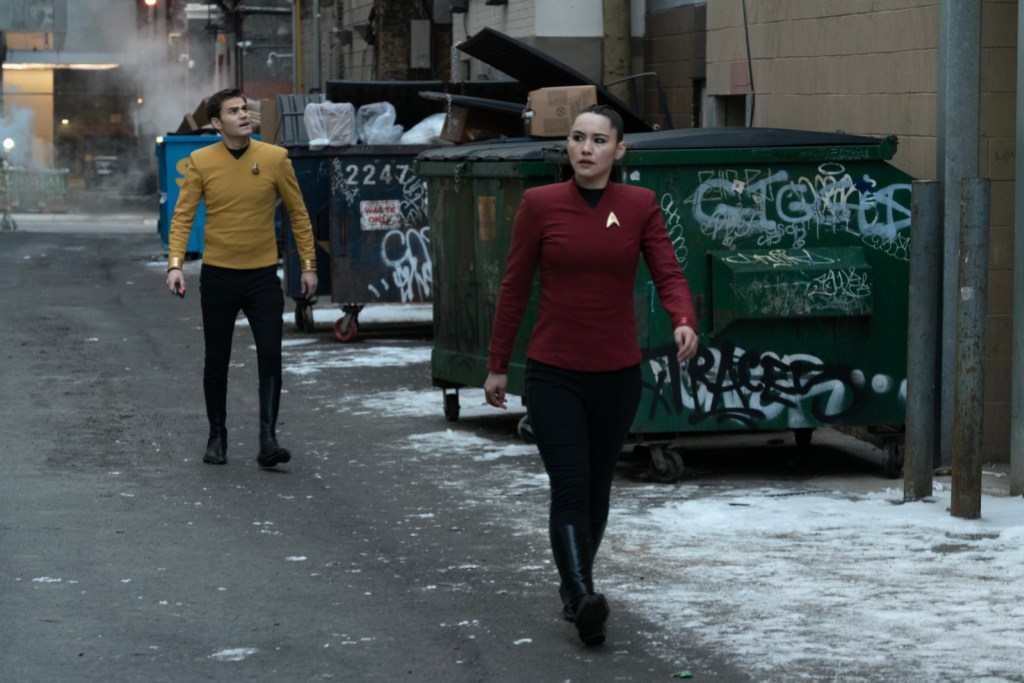
In his commentary for the movie First Contact, writer Brannon Braga reflected that he had been asked if they were going to the Eugenics Wars, replying, “Well, no. Because it would just be kinda strange.” Voyager showrunner Jeri Taylor offered a similar answer when she was asked the question, “I think that those of us who entered into the ’90s realize the Eugenics Wars simply aren’t happening and we chose not to falsify our present, which is a very weird thing to do to be true to it.”
Of course, the Eugenics Wars remains a fixation for hardcore fans. Author Greg Cox wrote a two-part Star Trek novel, The Rise and Fall of Khan Noonien Singh, trying to untangle that Gordian Knot of continuity, implying that the Eugenics Wars were a secret conflict that unfolded behind the scenes. Ultimately, the debate over the place of the Eugenics Wars within the Star Trek canon comes down to a very simple question. Who is Star Trek “for”? What is the franchise’s intended audience?
“I hate to sound harsh and I’ve taken a lot of flack from fans for this, but I really could care less about what was mentioned in an original series episode,” Brannon Braga told Cinefantastique. “What matters is what’s dramatically interesting and fun now. How much fun would it have been to go back to Earth and have to explain to 98 percent of the viewing audience what the hell the Eugenics Wars are?” The assumption was Star Trek was something made to be accessible to mass audiences.
“When I was a kid, with the original series, continuity had nothing to do [with it],” explained Braga’s writing partner, Joe Menosky. “My love for Star Trek predates fanhood.” Even Voyager was written with an eye on the general audience. “Most of the audience, our research shows, are not hard-core fans at all,” Braga offered by way of explanation. “Ultimately, we have to just [accept] the fact that there are going to be those 150 people on the internet complaining.”
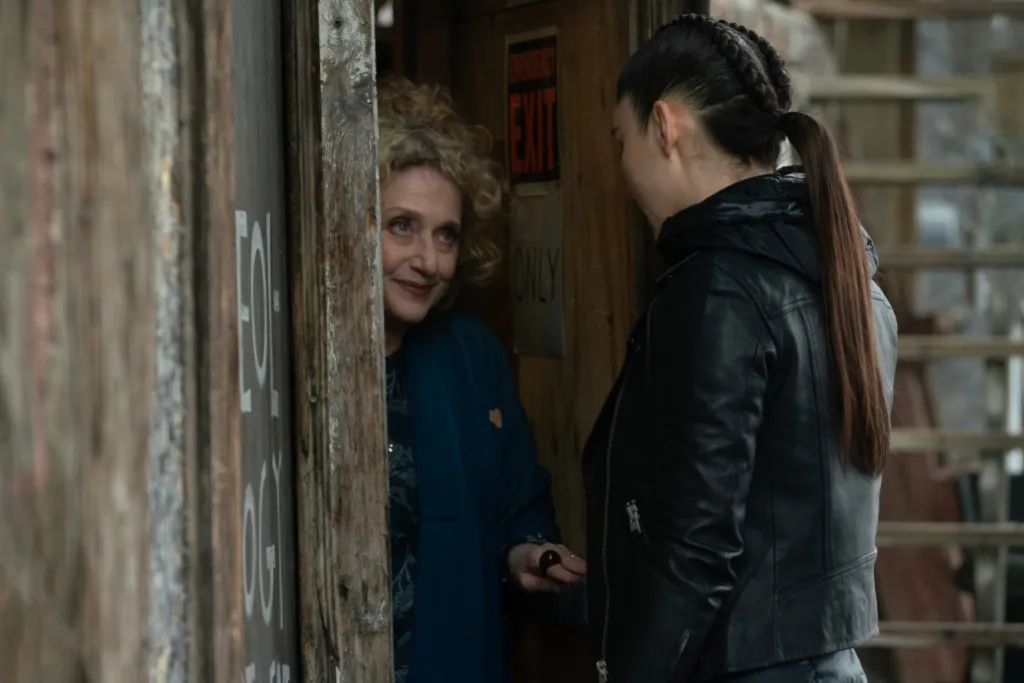
It increasingly seems as though major franchises like Star Trek are made specifically with “those 150 people on the internet complaining” as their target audience. This maybe makes sense in the larger context of the fragmenting of the monoculture and smaller streaming audiences. This is the “fan service methadone” approach to modern franchise storytelling, where the key demographic is the hardcore fans who are willing to pay $9.99 to $11.99 a month to get a hit of that thing that they recognize.
The irony is that this sort of hardcore audience is never going to be pleased, no matter how much continuity and fan service Strange New Worlds crams into its time travel romp. Free Enterprise director and high-profile Star Trek fan Robert Meyer Burnett, who famously complained about the race-blind casting of Adrian Holmes as Robert April, reacted to “Tomorrow and Tomorrow and Tomorrow” by insisting Strange New Worlds was “not canon” and that the series intended to “erase” the original Star Trek.
This pandering feels both self-defeating and alienating. With projects like Strange New Worlds and Picard, Star Trek has given up on being something that general audiences can embrace and enjoy on their own terms, instead becoming a collection of in-jokes and continuity references designed to appeal to a core audience that will never be appeased. Last week, Paramount announced the cancellation of Star Trek: Prodigy, arguably the only series among the current crop of Star Trek shows aimed at attracting a new audience rather than appealing to existing fans. The Star Trek universe is getting smaller, not larger.
“Tomorrow and Tomorrow and Tomorrow” is essentially an episode devoted to providing an in-universe explanation for why the Eugenics Wars didn’t really happen in the 1990s. “You know, so many people have tried to influence these events — delay them or stop them,” Sarah (Adelaide Kane) exposits. “I mean, whole temporal wars have been fought over them. It’s almost as if time itself is pushing back, and events reinsert themselves. And all this was supposed to happen back in 1992, and I have been trapped here for 30 years, trying to get my shot at him.”
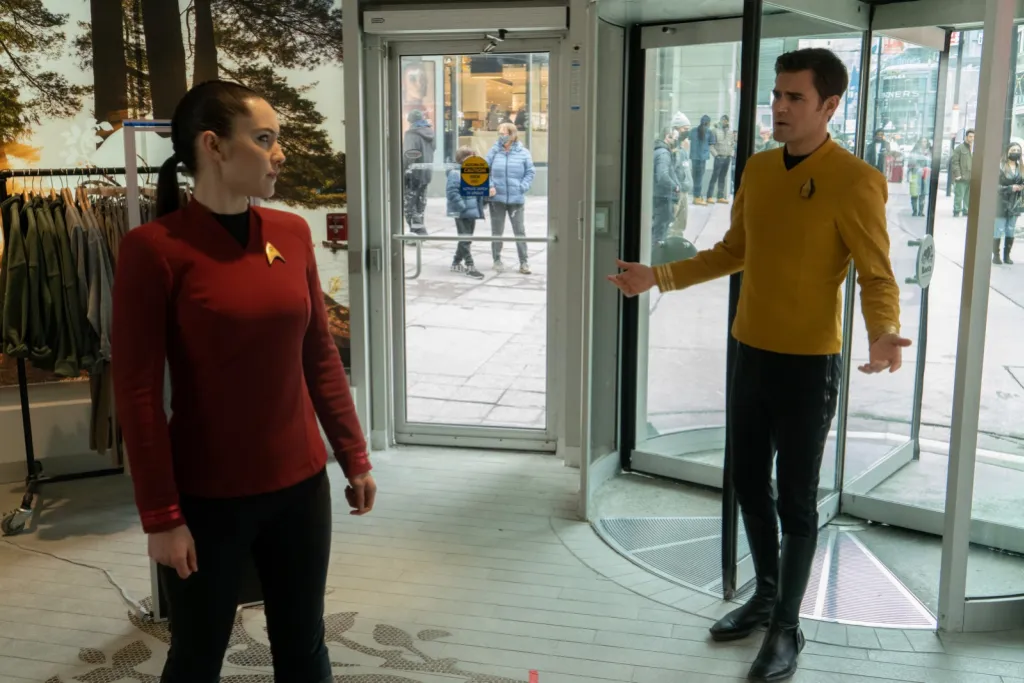
It’s not something that needed an explanation. Most television viewers inherently understand the difference between fiction and reality and why writers working on a 1960s Star Trek show might have made predictions about the future that never came true. It is not a problem that requires a “fix,” and any attempt to solve it ultimately just creates more problems. Like most of Strange New Worlds’ self-aware moments, it pushes the audience out of the story rather than drawing them in. This sort of fodder is fun for fan debates, but it’s not compelling drama.
Strip away the continuity nonsense, and “Tomorrow and Tomorrow and Tomorrow” ultimately comes down to the hoary old time travel cliché of “Would you kill baby Hitler?” as La’an confronts her ancestor, Khan (Desmond Sivan). Any emotional stakes here are tangled up in abstract time travel nonsense and continuity baggage, so what should be a story about La’an coming to terms with her identity becomes an episode about recognizing Star Trek things.
It’s a shame. As with a lot of Strange New Worlds, there’s some good stuff here before the show stubbornly gets in its own way. There is something endearing about the episode’s opening act, following La’an through an ordinary day, dealing with a “noise complaint” about Spock (Ethan Peck) and investigating the “suspicious provenance” of Pelia’s (Carol Kane) antiquities. It even makes good use of Babs Olusanmokun’s martial arts skills.
The episode then stumbles into familiar Star Trek clichés: the classic “time travel” episode. The franchise cannot help itself when it comes to time travel, and it feels a little lazy that “Tomorrow and Tomorrow and Tomorrow” comes only four episodes after “A Quality of Mercy.” Still, “Tomorrow and Tomorrow and Tomorrow” at least hits on a novel approach. It crashes the classic Star Trek time travel plot into another well-worn franchise plot: the classic Star Trek alternate universe. It’s “City on the Edge of Forever” meets “Mirror, Mirror.”
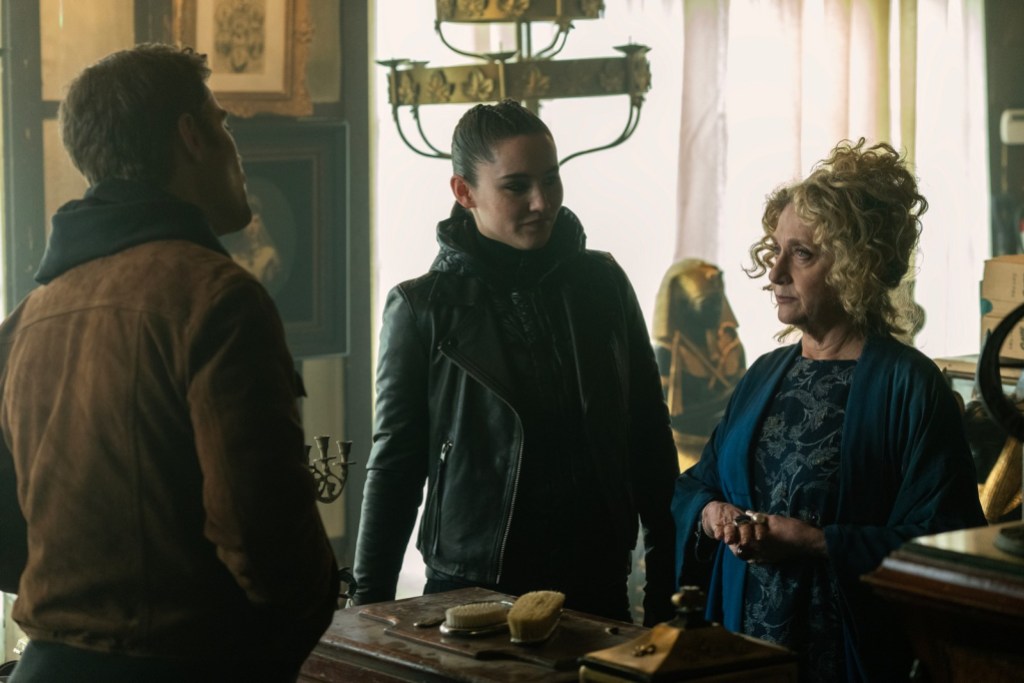
La’an is thrown back in time with a version of James Tiberius Kirk (Paul Wesley) from an alternate timeline created by Sarah’s manipulation of time. Kirk lives in a world without a Federation, where he works for the “United Earth Fleet.” This future is somewhat dystopian. Humanity is at war with the Romulans, has no alliance with the Vulcans, and has had to abandon Earth because the planet was a “battleground for a while, then occupied territory, then a ruin.”
This is an ingenious idea, because it gives the time travel story at the heart of “Tomorrow and Tomorrow and Tomorrow” something resembling stakes. La’an and Kirk come from two very different futures, and only one can come to pass, which will mean destroying the other. “If we fix your timeline, we destroy mine,” Kirk explains. “My life, my friends, my whole existence erased.” La’an replies, “I’m sorry, but your timeline isn’t supposed to exist.” Kirk presses, “According to who?”
This is a much more interesting approach to this story than any Eugenics Wars nonsense. La’an and Kirk are fighting over two competing visions of the future. There is even some social commentary in there. La’an is fighting for what Pelia describes as “this whole no-money socialist utopia thing,” while Kirk is fighting for something more individualistic, dismissing the idea of the Federation by insisting, “We don’t need anyone else’s help to survive.” He seems to believe in the “human-centered consciousness” articulated by human supremacist John Frederick Paxton (Peter Weller) in “Demons,” a late Enterprise episode.
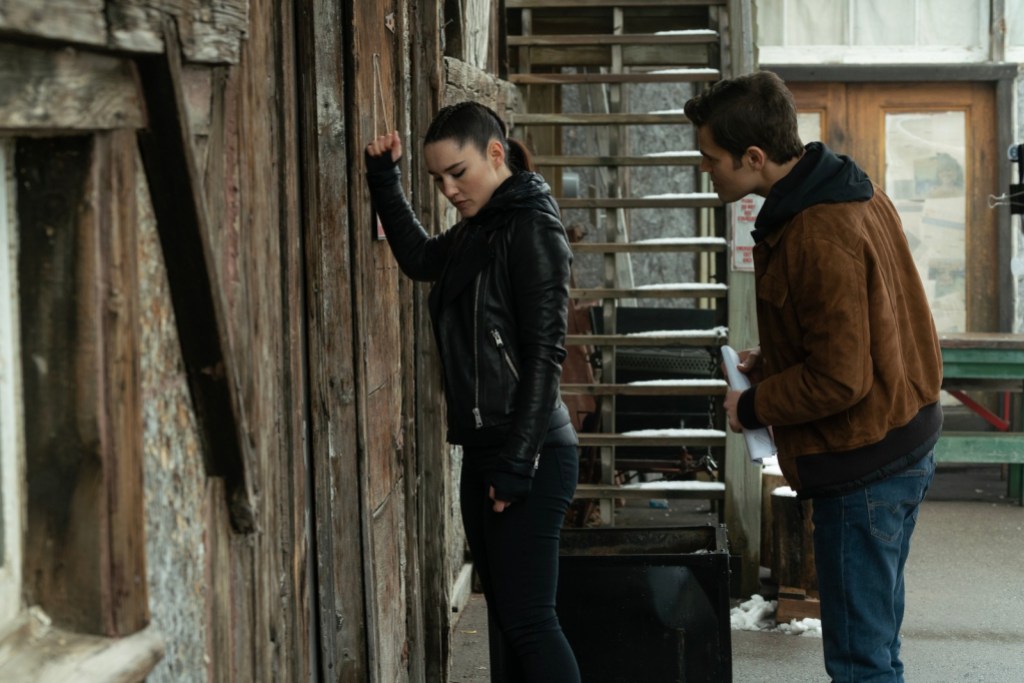
It hints at the subtext of the current political debate in modern American politics, the argument between social revolution and conspiratorial paranoia. La’an immediately registers that Sarah is “unhinged,” while Kirk respects that she believes conspiracy theories “in her gut.” Going back to the premiere, Strange New Worlds is a show somewhat clumsily engaged with the divide in modern American life demonstrated by the 2021 riots at the Capitol. That remains true in the subtext of “Tomorrow and Tomorrow and Tomorrow,” which is essentially about how the utopian future of Star Trek is not assured. Tomorrow is promised to no one.
However, Strange New Worlds is unwilling to actually unpack this. There is something tasteless in the episode’s implication that real-life tragedies like the murder of John F. Kennedy or the reactor at Chernobyl were the result of actions by Romulan sleeper agents with the intention of “slowing down human progress.” It’s weird to watch a show that is frequently entangled with the January 6th riots embrace such conspiratorial nonsense with regard to history. Then again, maybe this mindset is just another form of continuity wielding.

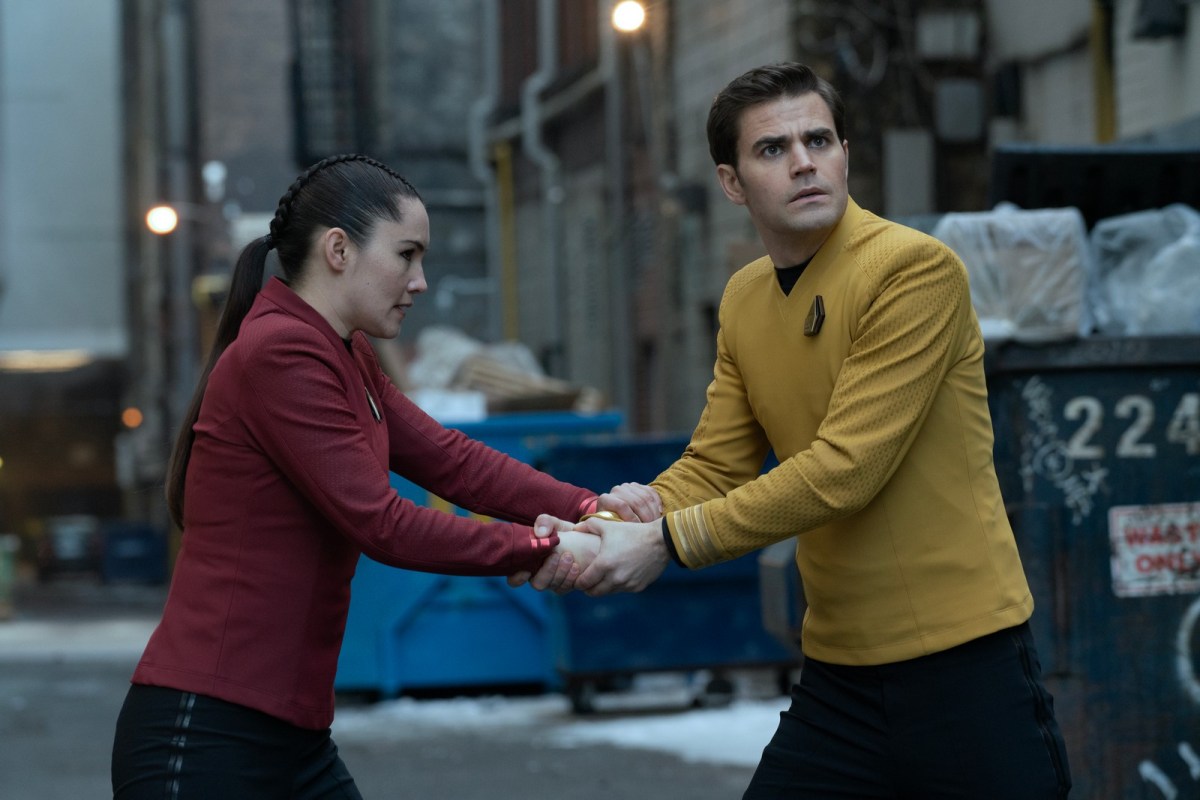




Published: Jun 29, 2023 10:00 am